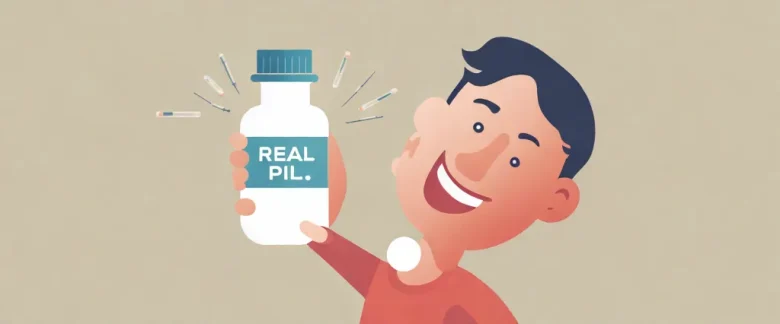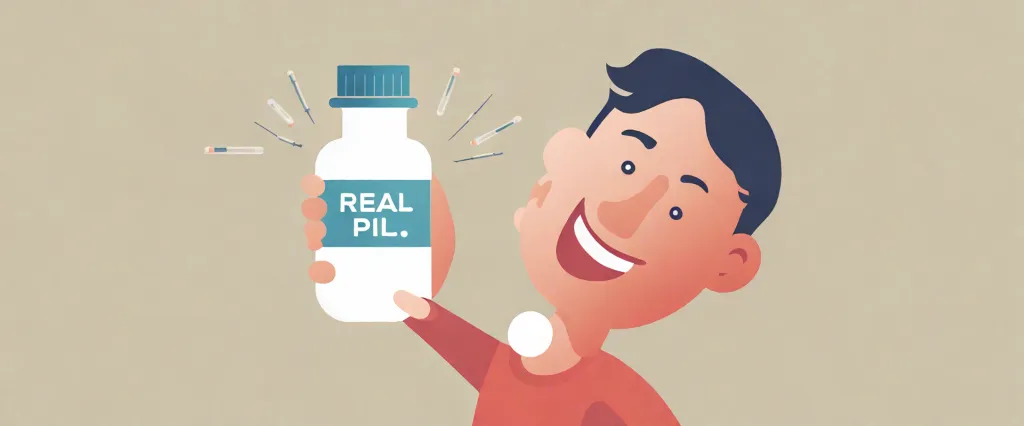In “Real Happy Pill,” Anders Hansen explores the link between physical exercise and mental well-being, shedding light on the powerful effects of movement on our mood and cognitive function. As a Swedish psychiatrist and neurologist, Hansen combines his expertise in brain science and experience with patients to demonstrate the profound impact that exercise can have on our mental health. Through engaging anecdotes and scientific research, he reveals the transformative benefits of movement for overcoming depression, anxiety, and stress.
Chapter 1: Exploring the science of happiness.
In chapter 1 of “Real Happy Pill” by Anders Hansen, the author delves into the science of happiness, exploring how our brains are wired to seek pleasure and avoid pain. He explains that happiness is not just a fleeting emotion but a complex interplay of neurotransmitters, hormones, and genetics that influence our psychological well-being.
Hansen discusses the role of dopamine, serotonin, and endorphins in regulating our mood and how certain lifestyle factors, such as exercise, sleep, and social connections, can boost these “feel-good” chemicals in the brain. He also highlights the importance of brain plasticity in shaping our thoughts and behaviors, emphasizing that we have the power to rewire our brains for greater happiness.
Through engaging anecdotes and scientific studies, Hansen demonstrates how simple changes in our daily habits and mindset can have a profound impact on our overall happiness and mental health. He encourages readers to embrace a holistic approach to well-being, including practicing gratitude, cultivating meaningful relationships, and finding purpose and fulfillment in life.
Overall, chapter 1 sets the stage for a deeper exploration of the ways in which we can cultivate lasting happiness and improve our quality of life through evidence-based strategies and insights from neuroscience.
Chapter 2: Understanding the brain’s role in well-being.
In Chapter 2 of “Real Happy Pill” by Anders Hansen, the focus is on understanding the brain’s role in well-being. Hansen delves into the intricate relationship between brain function and mental health, highlighting how various neurotransmitters like dopamine, serotonin, and oxytocin play a crucial role in regulating mood and emotions.
The chapter explains how these neurotransmitters operate within the brain and how they can impact feelings of happiness and well-being. Hansen also explores the importance of neuroplasticity, which refers to the brain’s ability to adapt and change in response to experiences and external stimuli. By understanding the brain’s neuroplasticity, individuals can learn how to strengthen their mental health and overall well-being through practices like mindfulness, meditation, and physical exercise.
Furthermore, Hansen discusses the impact of stress and chronic inflammation on the brain, emphasizing the importance of managing these factors to maintain a healthy mind and body. Overall, this chapter provides valuable insights into the intricate workings of the brain and how individuals can optimize their brain health to enhance their well-being and happiness.
Chapter 3: Uncovering the impact of exercise on mood.
In Chapter 3 of Real Happy Pill, Anders Hansen delves into the connection between exercise and mood. He explores the impact of physical activity on the brain, specifically focusing on its ability to reduce stress and anxiety by releasing endorphins and other feel-good neurotransmitters. Hansen explains how exercise can also improve cognitive function and memory, leading to a more positive outlook on life.
The chapter highlights various studies and research findings that support the idea that exercise is a powerful tool for combating mental health issues like depression. Hansen discusses the importance of finding a balance between different types of physical activities, including aerobic exercise, strength training, and even simple activities like walking or gardening.
Hansen also emphasizes the role of consistent exercise in maintaining long-term mental health and overall well-being. He provides practical tips for incorporating more movement into daily routines, such as setting realistic goals, finding activities that are enjoyable, and creating a regular exercise schedule.
Overall, Chapter 3 of Real Happy Pill emphasizes the profound impact that exercise can have on mood and mental health, encouraging readers to prioritize physical activity as a key component of their self-care routines.
Chapter 4: Nurturing relationships for happiness.

In Chapter 4 of “Real Happy Pill” by Anders Hansen, the focus is on the importance of nurturing relationships for happiness. The chapter highlights the significant impact that healthy relationships can have on one’s well-being and overall happiness. Research shows that people who have strong and positive connections with others tend to be happier and have better mental health.
Hansen explains that social interactions and relationships stimulate the release of feel-good hormones in the brain, such as oxytocin and dopamine, which contribute to a sense of happiness and well-being. He emphasizes the value of cultivating meaningful relationships with family, friends, and colleagues, as these connections provide emotional support, understanding, and a sense of belonging.
The chapter also discusses the importance of setting boundaries in relationships and fostering healthy communication to maintain positive connections. By prioritizing relationships and making efforts to nurture them, individuals can enhance their happiness and overall quality of life.
Overall, Chapter 4 underscores the significance of building and maintaining strong relationships as a key factor in promoting happiness and mental well-being. It serves as a reminder of the power of human connection in fostering a positive and fulfilling life.
Chapter 5: Managing stress and anxiety effectively.
In Chapter 5 of “Real Happy Pill” by Anders Hansen, the focus is on managing stress and anxiety effectively. The chapter emphasizes the importance of understanding the connection between stress and mental health and provides strategies for reducing stress levels to improve overall well-being.
Hansen explains how chronic stress can lead to anxiety, depression, and other mental health issues and offers practical tips for managing stress in daily life. He discusses the benefits of exercise, mindfulness practices, and relaxation techniques in reducing stress levels and promoting mental health.
The chapter also highlights the role of social support in managing stress and anxiety, as well as the importance of setting boundaries and prioritizing self-care. Hansen encourages readers to take proactive steps to address stressors in their lives, such as seeking therapy or counseling if needed.
Overall, Chapter 5 of “Real Happy Pill” provides valuable insights and tools for effectively managing stress and anxiety to improve mental health and quality of life. By implementing the strategies outlined in the chapter, readers can take control of their stress levels and cultivate a happier, healthier mindset.
Chapter 6: Embracing the power of sleep for mental health.
In Chapter 6 of “Real Happy Pill” by Anders Hansen, the focus is on the importance of sleep for mental health. The chapter explores how sleep is essential for cognitive functions such as memory, concentration, and creativity. Hansen explains the different stages of sleep and how each stage plays a crucial role in allowing the brain to rest and recuperate.
Hansen also discusses the link between sleep and mental health conditions such as depression, anxiety, and bipolar disorder. He highlights that disrupted sleep patterns can exacerbate symptoms of these disorders and emphasizes the importance of improving sleep habits to help manage these conditions effectively.
Furthermore, the chapter delves into the harmful effects of sleep deprivation on mental health, including impaired judgment, mood swings, and heightened stress levels. Hansen provides practical tips for improving sleep quality, such as establishing a consistent bedtime routine, creating a comfortable sleep environment, and avoiding stimulants before bed.
Overall, Chapter 6 underscores the significant impact of sleep on mental health and stresses the importance of prioritizing adequate, restful sleep to foster emotional well-being and overall mental health.
Chapter 7: Cultivating a healthy lifestyle for happiness.
In Chapter 7 of “Real Happy Pill” by Anders Hansen, the focus is on cultivating a healthy lifestyle to promote happiness. The chapter begins by discussing the impact of a sedentary lifestyle on mental health, highlighting the importance of regular physical activity for overall well-being. Exercise has been shown to boost mood, reduce stress, and improve cognitive function, making it a crucial component of a healthy lifestyle.
Hansen also emphasizes the importance of a nutritious diet in promoting mental health. Consuming a balanced diet rich in fruits, vegetables, whole grains, and lean proteins can help regulate mood and energy levels. Additionally, getting an adequate amount of sleep is vital for mental health, as poor sleep can lead to mood swings, irritability, and cognitive impairment.
The chapter also explores the benefits of mindfulness practices such as meditation and yoga in reducing stress and promoting emotional well-being. These practices can help individuals increase self-awareness, manage negative emotions, and improve overall mental health.
Overall, Hansen stresses the importance of making small lifestyle changes to cultivate happiness and improve mental health. By incorporating regular exercise, a healthy diet, sufficient sleep, and mindfulness practices into daily routines, individuals can boost their mood and overall well-being.

Chapter 8: Sustaining happiness through mindful living.
In Chapter 8 of Anders Hansen’s book “Real Happy Pill,” the focus is on sustaining happiness through mindful living. The chapter explores the idea that long-lasting happiness can be achieved by changing our habits and routines to promote well-being and mental health.
Hansen discusses the importance of mindfulness in daily life, emphasizing the benefits of being present in the moment and fully engaging with our surroundings. By practicing mindfulness, individuals can develop a greater sense of gratitude, improved focus, and reduced stress levels.
The chapter also delves into the concept of flow, or the state of being fully immersed in an activity that brings joy and fulfillment. Hansen suggests finding activities that bring flow into our lives and making time for them regularly to sustain happiness.
Additionally, the chapter addresses the role of social connections in maintaining happiness, highlighting the importance of nurturing relationships with others and fostering a sense of community.
Overall, Chapter 8 of “Real Happy Pill” provides valuable insights and practical strategies for incorporating mindfulness and positive habits into our daily lives to sustain happiness over the long term.
After Reading
In “Real Happy Pill,” Anders Hansen explores the science behind how exercise contributes to improved mental health and overall well-being. He outlines the numerous benefits of physical activity on the brain, from reducing anxiety and depression to boosting creativity and focus. Hansen’s research emphasizes the importance of incorporating regular exercise into our daily lives as a natural and effective way to improve our mental health. Ultimately, “Real Happy Pill” provides compelling evidence for the powerful connection between physical activity and happiness.
1. “The Happiness Project” by Gretchen Rubin – In this book, Rubin explores ways to increase happiness by making small, intentional changes in daily life and habits.
2. The Power of Now” by Eckhart Tolle – Tolle delves into the importance of being present in the moment and offers practical strategies for achieving inner peace and happiness.
3. “The Art of Happiness” by Dalai Lama and Howard Cutler – This book offers insights from the Dalai Lama on achieving a life of contentment and joy, combining Buddhist principles with modern psychology.
4. “The How of Happiness” by Sonja Lyubomirsky – Lyubomirsky explores the science behind happiness and provides evidence-based strategies for increasing personal happiness and well-being.
5. “Stumbling on Happiness” by Daniel Gilbert – Gilbert explores the psychological biases and misconceptions that often lead us to misunderstand what makes us happy, offering a fresh perspective on the pursuit of happiness.




